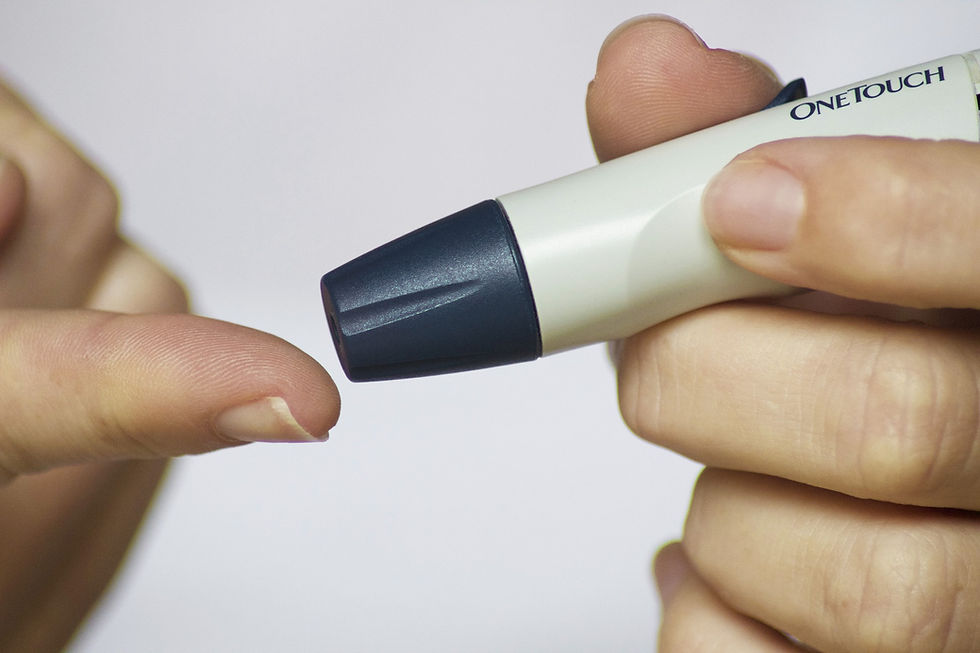Understanding PCOS: Uncovering the Causes and Recognizing the Symptoms
- Deepa Bhat
- Apr 29, 2024
- 4 min read
Updated: May 1, 2024
Polycystic ovary syndrome (PCOS) is a condition involving hormonal imbalances, irregular periods, and the development of small cysts on one or both ovaries.
There is so much information regarding PCOS over the internet, it can get overwhelming and stressful too. Keeping it simple with this article on Understanding PCOS, what causes it and recognising it with early or continuous symptoms and seeking medical help.
As early as 26 years of age, I was diagnosed with PCOS and my journey to deal, address and work towards reversing it has been not just challenging but also motivates me to help many more women going through the same. A lot of data is available online and can be overwhelming sometimes, hence this a compilation for easy understanding. (Credit: Healthline)

Understanding PCOS
Polycystic ovary syndrome (PCOS) is typically earmarked by irregular periods or by no menstruation at all. People with PCOS typically have multiple cysts in their ovaries, caused by an overproduction of hormones called androgens.

According to research from 2019 between 33 and 83 percent of women living with PCOS also have overweight or obesity. Common symptoms include:
acne
hirsutism (excessive hairiness)
male pattern baldness
People with PCOS, particularly when symptoms are not managed, may also be at greater risk of:
heart disease
endometrial cancer
diabetes
high blood pressure
Many people with PCOS find they’re able to manage their symptoms and reduce their risk of other health concerns with changes to their diet and lifestyle.
Common symptoms of PCOS

Some women start seeing symptoms around the time of their first period. Others only discover they have PCOS after they’ve gained a lot of weight or they’ve had trouble getting pregnant.
The most common PCOS symptoms are:
Irregular periods. A lack of ovulation prevents the uterine lining from shedding every month. Some women with PCOS get fewer than eight periods a year or none at all.
Heavy bleeding. The uterine lining builds up for a longer period of time, so the periods you do get can be heavier than normal.
Hair growth. More than 70 percent of women with this condition grow hair on their face and body — including on their back, belly, and chest. Excess hair growth is called hirsutism.
Acne. Male hormones can make the skin oilier than usual and cause breakouts on areas like the face, chest, and upper back.
Weight gain. Up to 80 percent of women with PCOS are overweight or have obesity .
Male pattern baldness. Hair on the scalp gets thinner and may fall out.
Darkening of the skin. Dark patches of skin can form in body creases like those on the neck, in the groin, and under the breasts.
Headaches. Hormone changes can trigger headaches in some women.
How PCOS affects your body
Having higher-than-normal androgen levels can affect your fertility and other aspects of your health.
Infertility To get pregnant, you have to ovulate. Women who don’t ovulate regularly don’t release as many eggs to be fertilized. PCOS is one of the leading causes of infertility in women.
Metabolic syndrome Up to 80 percent of women with PCOS are overweight or have obesity. Both obesity and PCOS increase your risk for: - high blood sugar - high blood pressure - low HDL “good” cholesterol - high LDL “bad” cholesterol Together, these factors are called metabolic syndrome, and they increase the risk for: - heart disease - diabetes - stroke
Sleep apnea This condition causes repeated pauses in breathing during the night, which interrupt sleep. Sleep apnea is more common in women who are overweight — especially if they also have PCOS. The risk for sleep apnea is 5 to 10 times higher in women who have both obesity and PCOS than in those without PCOS.
Endometrial cancer During ovulation, the uterine lining sheds. If you don’t ovulate every month, the lining can build up. A thickened uterine lining can increase your risk for endometrial cancer.
Depression Both hormonal changes and symptoms like unwanted hair growth can negatively affect your emotions. Many with PCOS eventually experience depression and anxiety.
How PCOS is diagnosed
Doctors typically diagnose PCOS in women who have at least two of these three symptoms :
high androgen levels
irregular menstrual cycles
cysts in the ovaries
Your doctor should also ask whether you’ve had symptoms like acne, face and body hair growth, and weight gain.
A pelvic exam can look for any problems with your ovaries or other parts of your reproductive tract. During this test, your doctor inserts gloved fingers into your vagina and checks for any growths in your ovaries or uterus.
Blood tests check for higher-than-normal levels of male hormones.
You might also have blood tests to check your cholesterol, insulin, and triglyceride levels to evaluate your risk for related conditions like heart disease and diabetes.
An ultrasound uses sound waves to look for abnormal follicles and other problems with your ovaries and uterus.
In my follow up articles, I will address Pregnancy and PCOS and Reversing PCOS, just the way I did. Working with women to help and coach them to become better version of themselves has been my driving force to start DFit Nutrition.



Comments